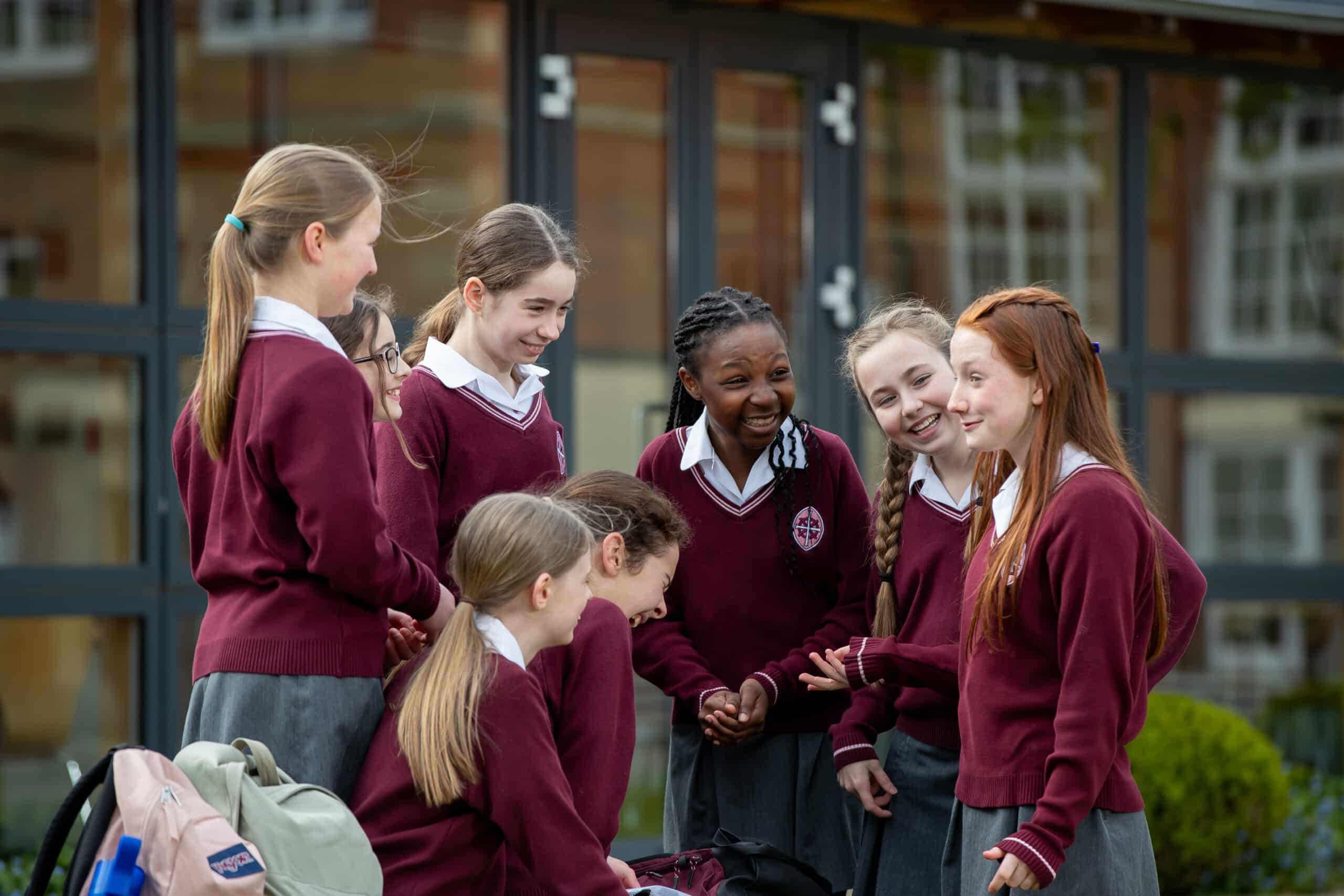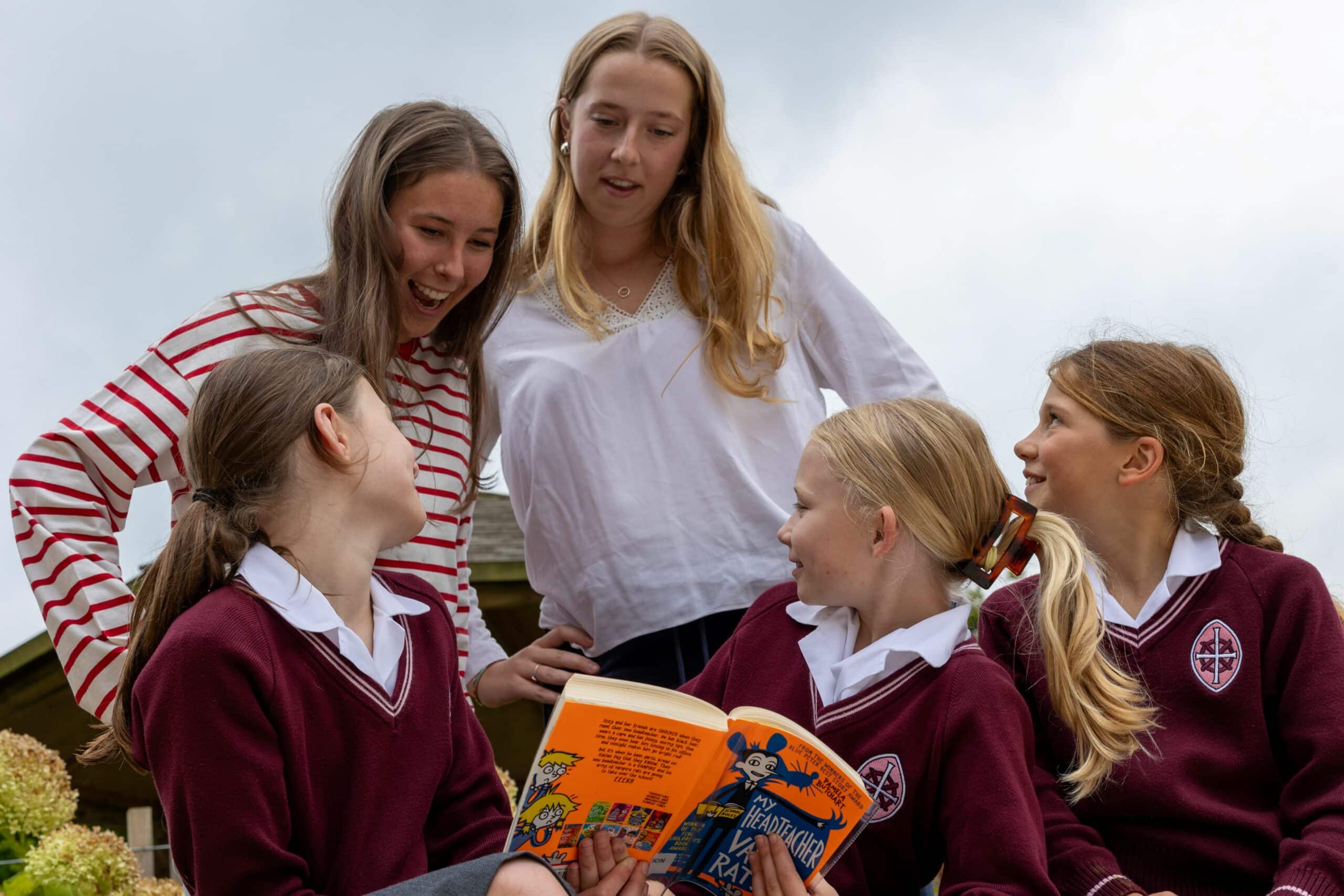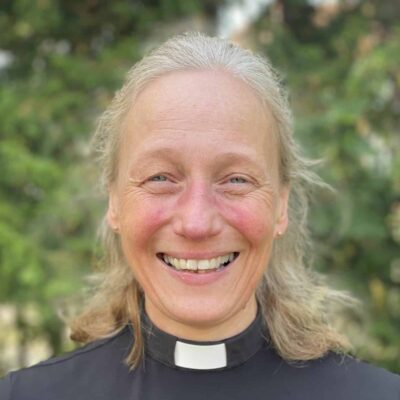Advent is the time of waiting and hoping and longing for the promises of God to be fulfilled, and Christmas is the time when we remember that God came down, to a broken and hurting world, and stepped into the mess we’ve made with love, hope, peace and light.
Advent worship is like a journey through the Christmas story. Christians use the Advent candles to celebrate this period usually with one lit every Sunday of Advent until the last central candle (which represents Christ), is lit on Christmas Day. This year in Chapel we covered Advent over two weeks before our Christmas Celebrations.
Advent 1: Serendipity
Thinking about the coming of the Christ child could be considered a moment of serendipity as we recentre our hearts and souls on God. Serendipity in the sense of something beautiful breaking into our lives such that they may never be the same again. The Christ child is coming. A new thing happens when we least expect it. Difficult things may not go away but we find that we can see them from a new perspective. We can perhaps think of Christmas as God’s serendipity.
What the Gospel writer and the whole season of Advent is asking us to do is hold the difficult, disturbing, unsettling yet hopeful vision of the world made different in constant tension with the seemingly harmless vision of a baby about to be born and a couple of blissful expectant mothers.
Actually, most expectant mothers know that a new baby is going to turn their life upside down and inside out. The Gospel writer impresses upon us that with the birth of this baby, the whole world will begin to be turned upside down, as surely as the money changers tables were in the Temple.
- What do you notice in this painting of the two women (below)?
- How does it reflect/complement the biblical story?
- What does it say about God?
- What does it say about human beings?
This image of Mary’s visit to her cousin Elizabeth is not a quiet embrace that evokes peace and tranquillity – here there is movement and joy.
The two women are dancing and the wind is blowing their dresses. Their bodies are touching one another and their babies, whose fates will be connected in their adult lives are also interconnected here in the symbolic form of the two joined spirals.
It is a beautiful moment of serendipity when Elizabeth’s baby, upon hearing Mary’s greeting, leaped in her womb. Mary then goes on to sing a somewhat controversial song which we know today as the Magnificat. Mary’s song is a radical earth-shattering vision of the world that could be, and it creates a tension with this scene of maternal bliss that can leave us confused – until we can see what God is doing.
Mary’s song is her very own redemption song and together with Elizabeth they dance to the beat of that song of freedom.
In this respect Mary follows in the footsteps of many of the ancient prophets of Israel who wrote their own songs of freedom. From Moses to Isaiah, Ezekiel to David, and those from our own day, in the 60’s and 70’s including Bob Dylan and Bob Marley!
“But my hand was made strong by the hand of the Almighty, we move forward in this generation triumphantly”.
Here Marley is saying that God is the source of triumph and victory in the journey to freedom – the only one who can empower and strengthen us.
Bob Marley knew well the history of his people who were brought in slavery from Africa to the Caribbean to work on the plantations of wealthy white farmers. He knew about their struggle for liberation and justice.
“Emancipate yourselves from mental slavery,
None but ourselves can free our minds.”
Yet in his song – the king of reggae is calling for a deeper form of freedom – one that starts in our own minds and that has the power to truly liberate us from within.
The freedom Marley advocates here is freedom from external manipulation and from any mindset that limits us as human beings or strops us from thriving and growing and flourishing.
“How long shall they kill our prophets
While we stand aside and look?”
But the song is also a protest against the violence towards those who have been set free from those constraints and see the world in a different light.
Those prophetic voices who from a place of freedom denounce injustice and work for a fairer world.
“Won’t you help to sing
These songs of freedom?
Because all I’ve ever had are these redemption songs.”
Finally in the chorus, Marley offers us an invitation, gently drawing us into his liberation movement. It is a beautiful and powerful message full of humility and hope – and it almost echoes the words of Jesus.
“If you abide in my word…you will know the truth, and the truth will set you free”. John 8:31-32
Mary prepares us for our Christmas celebrations because nestled in Mary’s womb is the one who comes to do God’s will, to bring the world to its knees and to overturn the world as we know it!
Advent 2: Names of the Messiah
This week we are again thinking about Advent and what it means to spend time waiting, hoping, and longing for the promises of God to be fulfilled. We’ll hear the words of the prophet Isaiah which many of you will be familiar with from Services of Nine Lessons and Carols as the story of the nativity and its prophecy is told.
In his book on ‘Names of the Messiah’, the theologian Walter Brueggemann wrote:
“Christians have claimed from their beginnings that Jesus was the Messiah foretold in the Hebrew Scriptures…Jesus did not replace or deny the expectations of a messiah previously told. He fulfilled them…Isaiah 9:2-7 is a well-known oracle, a divine utterance…that uses four royal titles…As we ponder the use of those titles with reference to Christmas and the birth of Jesus, two things become clear.
First, in the witness to Jesus by the early Christians in the New Testament, they relied heavily on Old Testament ‘anticipations’ of the coming Messiah. But second, Jesus did not fit those ‘anticipations’ very well, such that a good deal of interpretive imagination was required to negotiate the connection between the anticipation and the actual bodily, historical reality of Jesus.”
So how do we make those connections today? The prophecy, or oracle as Bruggemann called it, of Isaiah 9 is well known to many people today through the music of the German composer George Frederick Handel.
Handel’s ‘Messiah’ traces the life of Jesus and is one of the greatest choral works of all time. Written in 1742 it has captivated audiences for centuries with its universal themes of birth, hope, joy, suffering, sacrifice and redemption.
So, whether you’re familiar with the words of Isaiah’s prophecy from Handel’s ‘Messiah’, or from a Service of Nine lessons and Carols, can you think of what the four royal titles are that Bruggemann mentions, and how do they help us better understand the nativity story today?
To help us, some of the sixth form have done some fabulous colouring of images of the Christmas story as we know it, with the Names of the Messiah from Isaiah’s prophecy (poster purchased from Illustrated Ministry; and can be seen below, as a whole and with each quadrant enlarged).
And he will be called Wonderful Counsellor, Mighty God, Everlasting Father, Prince of Peace.
Wonderful Counsellor
So top left hand corner in a bit more detail: Here we have the Magi paired with the name Wonderful Counsellor. The Magi were wise people and sought to learn from the stars. The verse that accompanies the image is “The child grew and became strong, filled with wisdom.”
Being able to be a wonderful counsellor is more than just attaining knowledge, or knowing the science of stars…but rather it is about something deeper: wisdom. “The wisdom of God” is often personified as a woman. Scholars now commonly refer to this personification as “Sophia,” the Greek word for wisdom.
Strength of God or Mighty God
Moving to the top right: The shepherds are paired with the name Strength of God or Mighty God. While you certainly would have to be strong and capable to be a shepherd, the image of a shepherd isn’t what you would traditionally assume with names like Strength of God or Mighty God.
And I wonder what missing airpods might say to you about your priorities and how you listen for and hear the voice of God?! Just imagine the two shepherd’s brief conversation after following the star and hearing the angels sing:
So, what’s the story Morning glory? [Oasis]
How soon is now? [The Smiths]
Don’t look back in anger! I heard you say [Oasis]
There is a light that never goes out! [The Smiths]
There’s no other way [Blur]
Because Jesus said, “My kingdom is not of this world” – we should expect Jesus to turn things upside-down at times, and so we see the image of a lowly shepherd being used to describe God.
Eternal Protector
Mary and Joseph are paired with the name Eternal Protector. As they seek to parent and protect their newborn child, one of the ways we think about God is that of an everlasting or eternal father / mother/ parent. And yet, while God seeks to protect and watch over us, Jesus also wants to have a more intimate relationship with us than just standing above us and protecting us. Jesus said, “Let the little children come unto me.”
Picture yourself sitting with Jesus. He invites you to share with him whatever is on your mind, whatever is in your heart.
And now listen as Jesus responds to what you have shared with him. Just be open to his response, whether it be in actions, or as a feeling, or an image, or in words. Hear him speak your name [pause 3 seconds] and wait for his response.
Champion of Peace
Finally, the angels are paired with the name Champion or Prince of Peace. The angels came to announce Jesus’ birth to the shepherds, and to bring a word of peace. And yet, Christ, who is the champion of peace, brings peace to us in ways that often surprise and confound us. Jesus says, “My peace I give to you. I do not give to you as the world gives.”
So, as we go out from chapel today may the peace of the Lord be always with you.
Christmas 2023: Joy to the world
Here we have the fifth image which depicts the celebration and announcement of the birth of the Christ child: “Joy to the world! For unto us, a child is born!”.
For our Christmas celebration in Chapel, we played a Christmas pass the parcel! It went like this:
Why Birthday wrapping paper?
We remember Jesus’ Birthday. Remember that over 2000 years ago God came to earth. The Word became flesh and dwelt among us.
Why new born baby paper?
Jesus was born as a baby. God, who created the universe, who constantly reaches out to his creation, came down to earth as human baby. Small, vulnerable, helpless. As a baby, God had to learn to talk, to walk, to be fed. He grew. He wept. He got exhausted.
He was fully human and yet fully God.
Why wrapping paper with stars on?
A star led people to the place where Jesus was born. The wise men were led there. Wise men who were searching, hoping, longing. And God revealed himself.
But Christmas is not always joy and laughter. When families get together old hurts can come up. We may be painfully aware that people we would love to spend this time with have died or are no longer with us for other reasons. And the darkness can seem overwhelming.
So let us today, along with the wise men, look for the signs that God is at work. That God’s promises are true. Even on the darkest night – God’s hope shines through. A light has shone in the darkness and the darkness has not overcome it. Sometimes when all seems dark, we just need to look up to the stars to see a glimmer of the hope of God.
Why brown paper?
Jesus was born into a very poor family, in a stable. When God came to Earth, he didn’t do it in the shiniest way. He didn’t put an announcement in the Times newspaper. There was no fanfare. He came to a poor family. Far from home. In a tiny town of around 300 people.
And there was a heavenly host singing about it – but they came not to the palaces and the places of power – but to shepherds in the dark of night. The star was there too, but was only seen by those looking closely. It could easily be overlooked amongst the busy-ness of life.
Let’s not look for God in the fancy and the commercialism this year. Let’s find him in the ordinary and the overlooked. Let’s find the peace of God in the small moments.
Why newspaper?
The birth of Jesus is Good News for everyone. Because of this baby we can say “How great is the love the Father has poured out on us, that we should be called children of God! And that is what we are! We are made to reveal God’s glory. Hallelujah!”.
So, as we go out from Chapel this week, may each of us be challenged anew to be as Christ to others and to show his wonder, love and peace to the world which is still so much in need this Christmas.













